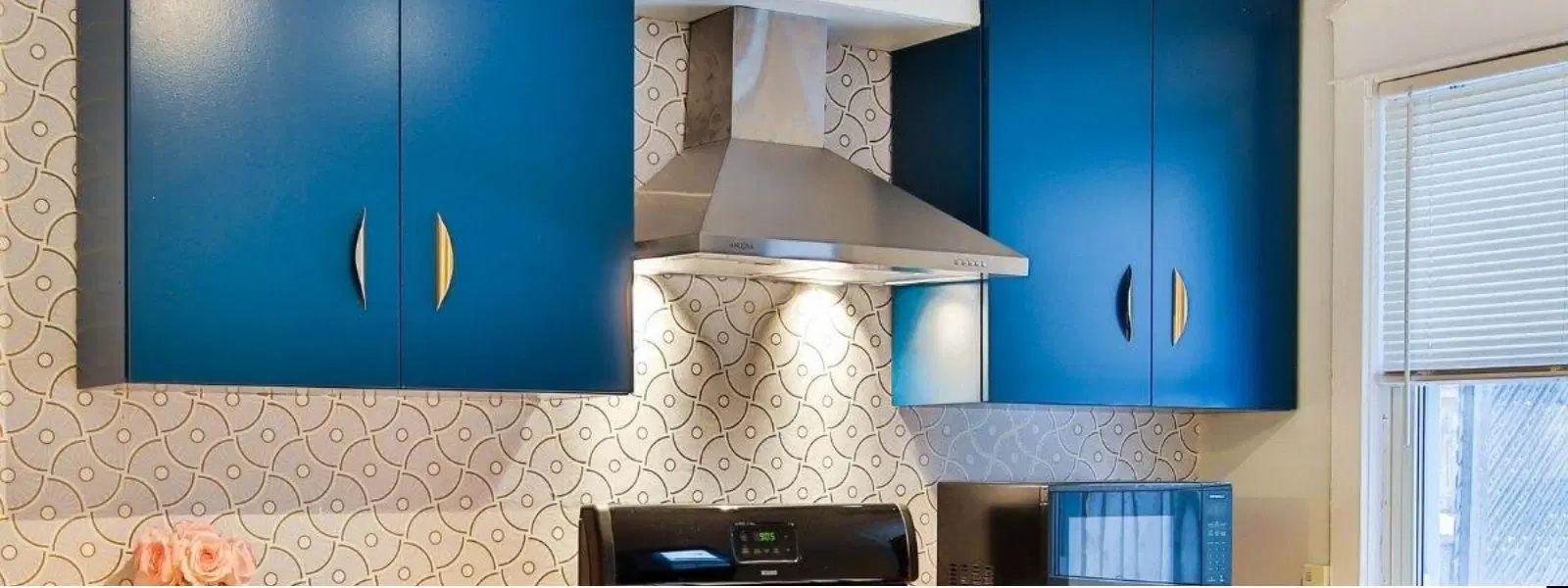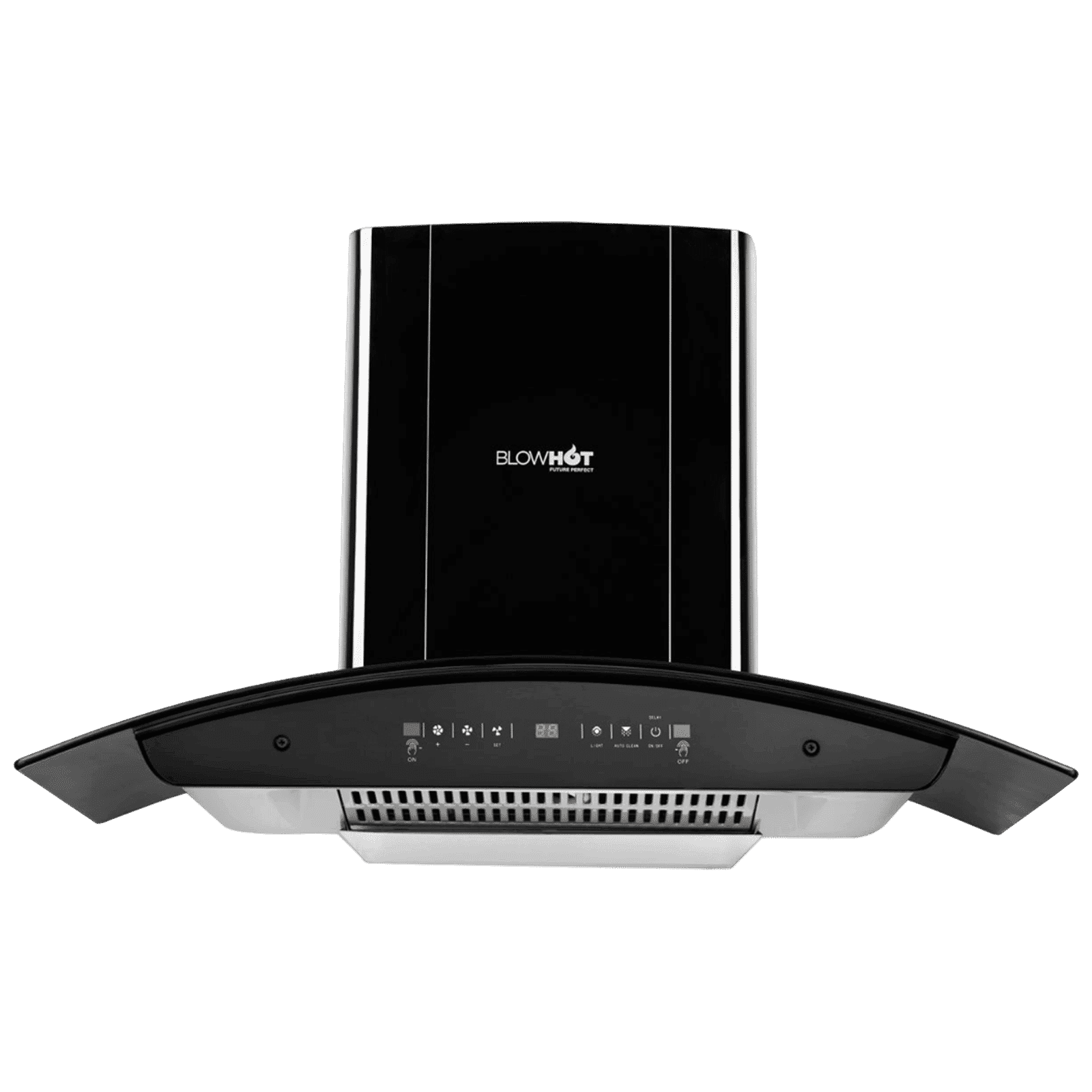
Home Appliances
•04 min read

Buy BLOWHOT ERICA TAC MS PLUS 90cm 1450m³/hr Ductless Auto Clean Wall Mounted Chimney with Motion Sensor (Black) online at best prices from Croma. Check product details, reviews & more. Shop now!
Ever wondered how much power your Kitchen Chimney consumes and whether it's slowly burning a hole in your energy bills? In today’s era where every watt counts, understanding chimney power consumption alongside energy efficiency is essential. In this article, we will explore what drives chimney electricity consumption, compare different models based on electric chimney wattage, and offer handy chimney energy consumption tips to help optimize your kitchen experience.
Chimney power consumption is a measure of the power needed by your chimney to operate effectively. This consumption is usually expressed in watts, and in some cases it might be translated into amps or even unit consumption per hour. The term electric chimney wattage is especially important as it determines not only the efficiency of the appliance but also its impact on your household electricity bills. Whether you have a low-power Kitchen Chimney or a more robust model, knowing these figures can help you manage your energy usage better.
Several factors influence how much energy your chimney consumes. First, the suction power plays a pivotal role in its performance, and many homeowners ponder, "Is 1200 suction power enough for a chimney?" For most medium to large kitchens, a suction capacity of 1200 m³/hr is ideal, ensuring effective fumes removal while keeping power requirements in check. Besides suction, motor efficiency, the type of filter used, and usage patterns also have a direct impact on energy consumption. Additionally, the size of your kitchen and your cooking habits significantly contribute to how much chimney electricity consumption you experience daily.
When comparing various chimney models, you will notice differences in electric chimney wattage. Modern models generally offer a wide range based on design—ranging from traditional ones to more advanced BLDC technologies. While traditional chimneys can be effective, newer energy-saving chimneys are designed to use less power while providing superior performance. This variability in wattage and consumption means that your chosen model should match your kitchen's size and cooking frequency, ultimately determining your overall kitchen chimney power usage.
Operating costs are a major consideration when choosing a new appliance. When analyzing chimney operating costs, typically measured as power consumption per hour, it becomes evident that more energy-efficient models, such as those with BLDC motors, can lead to lower running expenses in the long term. For instance, a BLDC chimney consumes up to 40% less electricity compared to a traditional chimney, making them a sensible choice for energy-conscious households. These benefits not only translate to immediate savings but also reduce the environmental impact over time.
Did You Know?
A BLDC chimney consumes up to 40% less electricity compared to a traditional chimney, making it a great choice for energy-conscious households.
Energy efficiency in chimneys is all about maximising performance while minimising power usage. This is particularly significant for households looking to reduce their monthly electricity bills and embrace sustainable living. Energy saving chimneys usually integrate advanced features and technologies that reduce the strain on your energy resource, ultimately offering a smart way to maintain a comfortable and economically sensible home environment.
When shopping for an energy-efficient chimney, look for features that contribute to cutting down on power usage without compromising on performance. Technologies like filterless designs, auto-clean functionalities, and motion sensors not only ensure cleaner air but also promise to keep power consumption at a minimum. A combination of these innovations contributes to a more reliable appliance, making these power-efficient home chimneys a worthwhile investment for any modern kitchen.
Optimizing your kitchen chimney's performance is easier than you might think. Start with routine maintenance and cleaning to ensure all components are running smoothly. Avoid overusing the appliance—remember, using the chimney only when necessary can have a substantial impact on reducing overall power consumption. Moreover, choosing a model with the appropriate suction power based on your kitchen size can always yield better efficiency in the long run.
Although the initial cost for energy-saving chimneys might be slightly higher, the long-term benefits of switching to a more efficient model are undeniable. With reduced power consumption comes lower operating costs, which can quickly offset the upfront expenditure. Furthermore, businesses that offer expert guidance and value-packed rewards systems, like NeuCoin earn on every purchase, provide additional justification to upgrade your kitchen appliance. A thoughtful purchase today could mean sustainable savings and enhanced kitchen functionality in the coming years.
Chimneys typically consume between 120-250 watts per hour, depending on the model and suction power.
Most chimneys operate at 1-2 amps, though this may vary based on specific features and motor efficiency.
Modern low-power kitchen chimneys within the energy-saving segment consume closer to 120-150 watts per hour, if designed with advanced technologies and efficient motors.
Yes, 1200 m³/hr suction power is generally sufficient for medium to large kitchens with regular cooking demands.
The key factors include motor efficiency, suction power, usage duration, filter type, and overall kitchen size.
In summary, understanding chimney power consumption and energy efficiency is critical for every household. By comparing different models through their electric chimney wattage and analysing their operating costs, you can make well-informed decisions that enhance energy efficiency at home. The integration of innovative features in power-efficient home chimneys illustrates that smart design goes hand in hand with economic savings and sustainable living practices. Whether you are looking to reduce your monthly bills or adopt more energy-savvy practices, the key is in making informed decisions, routine maintenance, and embracing solutions that lower your overall kitchen chimney energy usage.
Choosing an energy-saving chimney not only safeguards your wallet but also contributes positively towards an eco-friendly environment. Stay tuned for more insights into the latest kitchen innovations and effortless ways to upgrade your home experience while reaping benefits like NeuCoin earn every time you shop. With smart choices today, you set the stage for a more sustainable and efficient tomorrow.